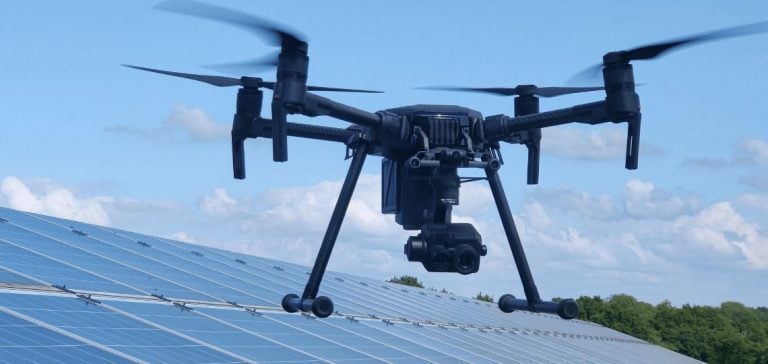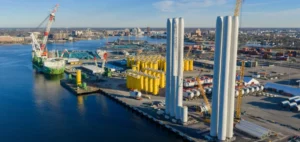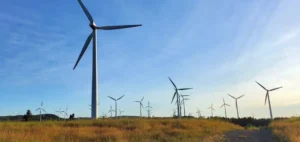The British Civil Aviation Authority (CAA) has announced a major change in its drone operation policy, allowing their use to monitor critical infrastructures such as power lines and wind turbines. This decision will have significant impacts on the energy sector in terms of operational efficiency, cost reduction, and safety improvement.
The energy sector, particularly in the production and transmission of electricity, will benefit from this regulatory evolution. With the increasing complexity of networks and the adoption of renewable energies, maintaining infrastructures like wind turbines and power lines is becoming more costly. Traditional inspection methods are laborious and expensive.
Authorization of BVLOS Drones
Authorizing drones to fly beyond the visual line of sight of the operator (BVLOS) represents a major advancement. This allows for remote monitoring of assets such as offshore wind farms while reducing the risk of interference with commercial aviation. Companies can thus monitor their infrastructures in real-time without disrupting airspace, thereby improving response times to incidents.
BVLOS drones offer greater flexibility in managing maintenance operations. For example, during adverse weather conditions, drones can perform inspections without requiring the physical presence of technicians on-site. This not only speeds up the maintenance process but also reduces risks to employees in potentially hazardous environments.
Operational Efficiency and Cost Reduction
Drones provide enhanced efficiency, enabling frequent and automated inspections. Electricity transmission companies can use drones to quickly detect damage after a storm, facilitating predictive maintenance that avoids costly outages. This proactive approach improves the reliability of electrical networks and minimizes service interruptions.
In the case of wind turbines, drones reduce the need for manual intervention, thus limiting costs associated with maintenance and downtime. Drone inspections can also enhance safety by decreasing risks associated with working at heights, thereby protecting employees.
Technological and Regulatory Challenges
Implementing BVLOS operations is not without challenges. The reliability of communications in remote areas, particularly for offshore infrastructures, remains a significant hurdle. Close collaboration between the CAA and operators is crucial to evaluate the feasibility and safety of these new methods. Strict protocols must be established to ensure that drones pose no risk to other aircraft and to the safety of the monitored infrastructures.
Moreover, integrating the data collected by drones into existing management systems requires investments in information technology and staff training. Companies must ensure that data is processed efficiently and securely to maximize the benefits of drone usage.
Impact on Renewable Energies
In the context of the UK’s energy transition, particularly with offshore wind energy, drones play a key role. Their ability to perform rapid and frequent inspections enhances the reliability of infrastructures while reducing maintenance costs. These technologies will contribute to maximizing the yield of renewable energies by ensuring regular and effective maintenance of equipment.
The use of drones can also accelerate the development of new wind farms by facilitating feasibility studies and inspections prior to construction. This allows for quicker and safer expansion of the country’s renewable energy production capacity.
Financial Considerations
Utilizing drones for infrastructure inspection results in reduced operational costs and increased asset reliability, thereby improving the profitability of energy companies. The increased uptime of wind turbines, for example, will enhance revenues while optimizing expenditures. Additionally, the rise in demand for drone services could stimulate innovation in the sector, promoting the growth of companies specializing in this technology.
Investments in drone technologies may also attract funding and grants aimed at promoting innovations within the energy sector. This can strengthen the position of British companies in the international market regarding monitoring and maintenance technologies.
Future Perspectives and International Implications
The CAA’s decision could influence other regulators worldwide, such as the European Union Aviation Safety Agency (EASA) or the Federal Aviation Administration (FAA) in the United States. Such an evolution could promote the harmonization of policies regarding the industrial use of drones, thereby improving the competitiveness of energy sector companies.
In the long term, the widespread adoption of drones for monitoring energy infrastructures could transform practices in other industrial sectors, such as transportation, construction, and natural resource management. This technological transformation could lead to significant efficiency gains and better resource utilization.






















